Mhairi McKay on sisterhood, Tiger time and her M&Ms golf bag
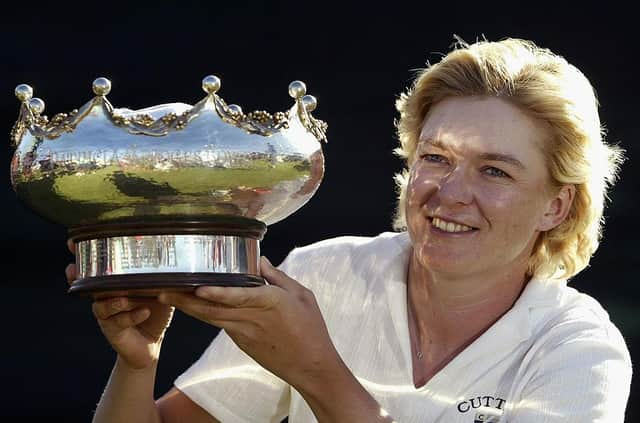

She then enjoyed a successful collegiate career during a ground-breaking scholarship stint at Stanford University at the same time Tiger Woods was there before enjoying the highlight of her professional career when winning the Australian Open in 2003.
McKay, who now lives in Los Alamos in New Mexico, also played in two Solheim Cups, including a success in Sweden in 2003 alongside her long-time friend Janice Moodie and Catriona Matthew.
Advertisement
Hide AdAdvertisement
Hide AdClear this one up: did you start to play at Bothwell Castle or Turnberry?
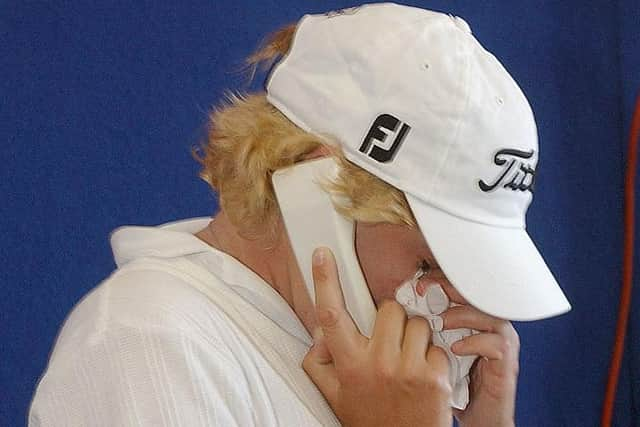

MM: I played a bit at Bothwell Castle, but my parents, Peter and Mary, had a little holiday place in Girvan and I would play the first eight holes at Girvan as a little thing before becoming a member at Bothwell Castle. The first eight holes at Girvan are brilliant and, when I get back home, it’s nice for my two kids to learn on the same track I did and it’s funny the memories you have as a youngster there and how big and intimidating it seemed then but, to then go back and play it again as a bit more experienced player, it seems a bit more manageable (laughing).
You clearly had some great family memories from those early days playing the game?
MM: Yeah, my sister Fiona also played and also my brother Kenny, who is a year older than my sister. We’d go out and I’d have my little hickory-shaft golf club and they’d let me have a hit out on the fairway and not try and hold the game up behind. It was great the five of us being out on the golf course and those are special golf memories that help plant the seed.
So, it was through having that home in Girvan that you became a Turnberry member?
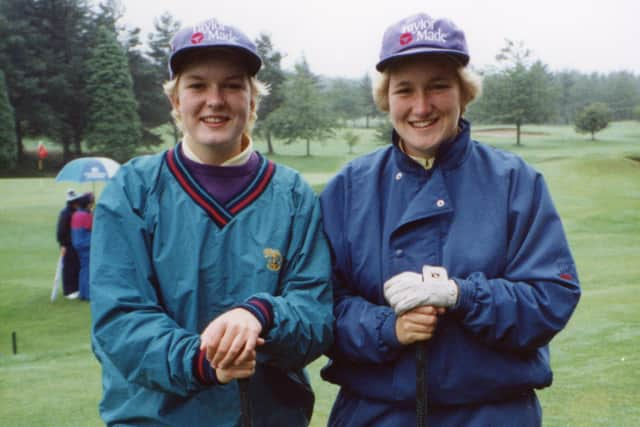

MM: My mum was the first member of the family to become a member at Turnberry in 1977, I think. Then my sister and brother joined the junior section, as I eventually did as well, and my dad was the last one to join as he was so busy working. I have some very happy memories from playing at Turnberry, too.
How important was playing there in your development as a golfer?
MM: Gregor and Bob Jamieson were so important to my career and also my sister’s career. Before Gregor moved over to Lake Nona, he was great, giving my brother and sister lessons and was patient enough to let me tag along and give me some instruction, too. When he moved over to the States, we had lessons from Bob and it was that traditional coaching and playing by feel. Turnberry and the Jamiesons definitely played an instrumental part in our development.
Advertisement
Hide AdAdvertisement
Hide AdYou won the Girls’ Amateur Championship back-to-back in 1992 and 1993. You must have realised then that you were pretty decent at the game?
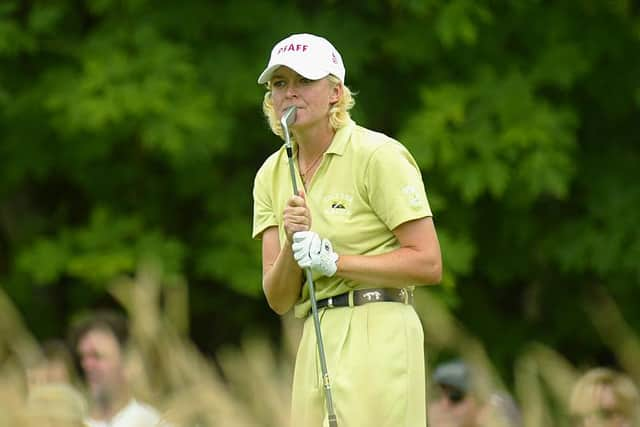

MM: Those were good, fun victories down at Northamptonshire and Helensburgh. There was always another goal to play for. I just loved trying to get into the Scottish Girls’ team and then the Scottish Under-21s team and then a senior internationalist then playing in the European Team Championship and then the Curtis Cup. There were always these little stepping stones and I was really lucky to have an older sister who led the way for me and was always happy for me to hang on to her coat-tails and have the patience to take care of her little sister. Her friends also didn’t mind having this wee girl four years younger than them tagging along. I was always trying to keep up with Fiona by making teams, starting at county level and then Scottish Schools’ teams and so on.
It must have been a special occasion when you and Fiona played on the same Scotland team in the 1992 Women’s Home Internationals at Hamilton?
MM: Yes, definitely. I have a picture up on the wall in my home, I can see it up in the other room right now, of Fiona and I together. I was just so lucky to have my sister be so successful in the game and go ahead and do things before me. Seeing what she was achieving made me want to follow in her footsteps and keep up with her. It was great to be able to play in the Home Internationals together, though I honestly can’t remember if we played together that week (laughing).
You played in two Curtis Cups, joining Catriona Matthew, Janice Moodie and Myra McKinlay in flying the Saltire in a draw in 1994 then being part of a win two years later with Janice Moodie and Alison Rose?
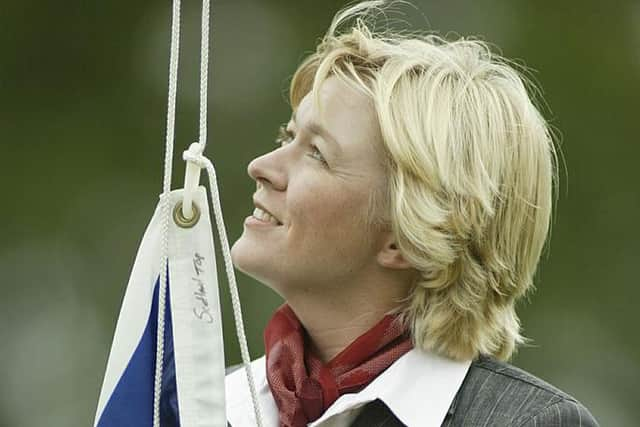

MM: The draw was at the Honours Course in Chattanooga and that was a big deal to take the trophy on American soil. To then go to Killarney two years later and win outright, I’ve got brilliant memories of both occasions but particularly Killarney as we had amazing support there from the Irish golf fans and the other people who’d made the trip over. It was one of those amazing, brilliant weeks.
How did your move to Stanford University come about as you were the first international female player to be offered a golf scholarship there?
MM: I think there was a Swedish girl there several years before me, but she became really homesick and I’m not sure she stayed more than a year. The coach was concerned about taking a risk with another international player, but my mum’s really good friend from Bothwell Castle, Joyce Scott, it was all due to her, really, that I ended up at Stanford. She and her husband, Charlie, are very keen golfers and their daughter was a nurse at Stanford University Hospital and they’d go out and visit Val. She arranged for them to go and play at Stanford golf course and they bumped into the women’s golf coach at the time, Tim Baldwin, and struck up a conversation, saying ‘we know a girl who would love to come here’ and told him about a few of my achievements. I don’t know why they had it, but I was on the cover of the Golf Foundation’s Tee to Green magazine, having won the Daily Telegraph Junior Championship, with a nice article inside on that and they gave it to Tim, which started my whole connection. I’m not sure how else Tim would have found out about me if it hadn’t been for that. Through Bob Jamieson, there had been contact with Duke University, so I went on a recruitment trip to both places and ended up going to Stanford, where I enjoyed an opportunity of a lifetime.
Advertisement
Hide AdAdvertisement
Hide AdThey’ve been improved since, but I take it the facilities back then were still pretty special?
MM: You virtually rolled out of your bed in the dorm and found yourself on this amazing driving range, where you hit ball after ball, or an amazing short-game area, as well as having the chance to play an amazing golf course. At the time I was there, there were so many great players, including Notah Begay, Casey Martin, who had the Supreme Court case a few years ago over using a golf buggy, and the year after I started Tiger Woods came along. It was a really fun time to be there and the men’s and women’s teams were really close. We were always encouraging one another.
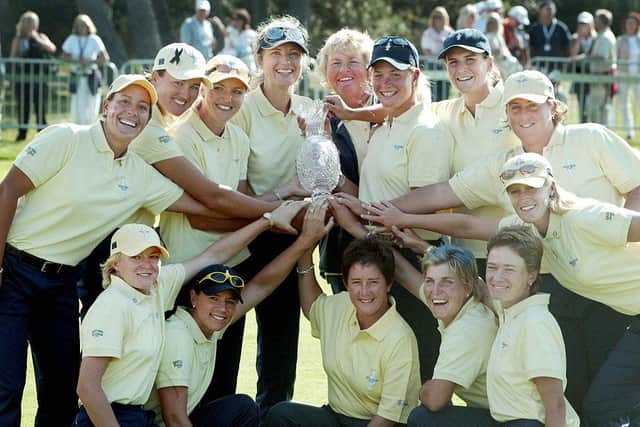

Tell us a bit more about having Tiger Woods as a fellow student?
MM: Tiger is a year younger than me so I was in my second year when he was a freshman. Our times overlapped.
Was there a buzz about who he was?
MM: Absolutely. There was a lot of excitement about him coming because he was already a special player. In his time at Stanford, his dedication to the game and his drive was there for everyone to see. Whenever he told you his ambitions and what he wanted to achieve or things he said he could do, if it had been anyone else you’d have been thinking, ‘right, whatever, I don’t believe you’, but he could always back everything up. He was just amazing and took golf to another stratosphere, really.
Your own collegiate career was also pretty special. What do you pick out as your highlight?
MM: In my senior year, I won the Pac-10, as it was at the time, Conference Championship and that was a real highlight as you had your Arizona, Arizona State, UCLA, Oregon, Washington players etc in that. In my junior year, we had a really good run at the national championships and going into the last six holes we were either tied for the lead or a couple of shots behind and though we didn’t quite have the best finish down the stretch, it was nice to be in the thick of things. I have a lot of great team memories as it was an incredible four years.
When did you feel you were destined to carve out a career in the game?
Advertisement
Hide AdAdvertisement
Hide AdMM: Going to Stanford and playing collegiate golf there and it came to a point where you get to your senior year where you are thinking do I want to go and find a more traditional career or do I want to keep playing. I was reluctant at that point as I didn’t feel I had fulfilled all my potential of seeing how far I could develop my game. It was at that time that I started to think more intensely about turning pro.
You secured a card for the LPGA at the first attempt. How much of a confidence boost was that at the start of your professional career?
MM: I remember going to Qualifying School and I didn’t actually secure a full card as it was probably one of the most horrible, stressful events that you will ever play in. I ended up getting a conditional card and the focus in my first year on tour was trying to get into tournaments via the Monday qualifiers. That was really hard when you were playing for just two spots, but I managed to get into a couple of tournaments and I also remember having a good US Women’s Open at Black Wolf Run. That was a springboard and a confidence builder.
You won the Australian Women’s Open in 2003. What do you remember about that?
MM: It was at Terry Hills Golf in Sydney. I love Australia and I love Sydney. I remember my caddie saying on the back nine in the last round, ‘don’t look at the leaderboard’ and also holing a huge putt - it must have been 70 feet - from the side of the green at the 15th. I played really well on the back nine and made lots of birdies. I think Laura Davies had been leading going into the final round, but I just kept plugging away and making birdies. I didn’t look at the leaderboard until holing my final putt and it was great seeing my name at the top of it. That was really special and the Australian fans were great that week.
You came close a few times, but didn’t manage to win or European or US soil as a pro. Is that a slight regret?
MM: I gave myself opportunities. I had a couple of good chances in the US Open, but it just didn’t pan out and that’s just golf. I played the last round with Annika Sorenstam in an event in Chicago and finished runner-up to her the week after she’d played against the men. I was runner-up on another occasion and, though it would have been nice to get it over the line, that’s golf. The professional circuit is a whole different ball game to the amateur game, but I gave it my best shot and I am really proud of my career and really proud of my Australian victory.
How cool was it to have an M&Ms golf bag?
MM: I became really popular with lots of kids and I figured out that I could become even more popular if I could hand out fun-sized treats to kids on the way round. Everyone loved seeing the M&Ms golf bag and I tried to make the most of it by sweetening everybody up (laughing).
How did that come about?
Advertisement
Hide AdAdvertisement
Hide AdMM: Actually, I had played with Rick Brown, a Mars guy, in a pro-am and was able to make a connection between him and my friend Doug Meijer, who owns Meijer Grocery Stores. Doug said to him, ‘I hope you are going to take care of Mhairi’, and that’s how it came about. I made something happen, which was nice, as you never know when an opportunity is going to show up and I feel really lucky that I made some good friends and had some nice people taking care of me and I’m still friends with both of them, which is great.
You played in two Solheim Cups, beating Beth Daniel in the second one in Sweden in 2003 to help secure a big win for Europe. How special was that?
MM: Yeah, the Solheims were great. In the first one at Interlachen, I lost to Pat Hurst in the singles. I actually played really well that day. She chipped in twice and we were both under par. There might have been one other girl on the European team who had better figures that day, but I just came up against a strong opponent in Pat. It was disappointing that the team didn’t get it over the line that day after being in a good position heading into the singles, so it was nice to get another chance in Sweden, where I managed to get a singles victory over Beth.
Catriona Matthew and Janice Moodie were also part of that 2003 team. Have they both been a big part of your life in golf over the years?
MM: Absolutely, particularly Janice. Catriona is that little bit older and I think my first Home Internationals in Wales, I think she was in the team and then she turned pro. Janice and I came up through the West of Scotland Girls together since I was 10 or she was around 12. It’s funny that we ended up going to college at the same time and she was at San Jose and I was at Stanford. We grew up together in Scotland and continued to see each other a lot when we were halfway around the world. To have somebody like Janice, who was so competitive and driven, a bit like my sister, you want to keep up with them and match or better them. Janice is still a great, dear friend and we keep in touch.
Having talked to both of you over the past couple of months, I think you have retained your Scottish accent a little bit better?
MM: Can you write that in the paper please (laughing) as she would say that her accent is stronger!
Tell us about some of your scoring feats at St Andrews?
MM: I was the first woman to break 70 on the Old Course in the St Rule Trophy with a 69 then, two years later, I shot 67. I was proud to then go back there and play as a pro and shot 67 again to tie the course record, though I think that has subsequently been broken. But it’s definitely nice to be able to say that I was a course record at St Andrews as it is a special place.
Advertisement
Hide AdAdvertisement
Hide AdIs it right that you also have a claim to fame at Cypress Point in California?
MM: I do and that’s a cherished memory from my Stanford days. As a graduation present from a friend, myself and my best friend on the team got to play at Cypress Point and the whole day was so exciting. It was a gorgeous day on the Monterey Peninsula and we had been building up to playing the 15th and 16th in particular. At the 16th, I hit a 3-wood off the back tee and I remember turning round and saying, ‘I think that might be the best shot I’ve ever hit’. My eyesight is not the best and, though it looked pretty good in the air, I couldn’t see it landing on the green. My best friend started jumping up and down and going bananas, saying, ‘it went in!’ She wanted to run up to confirm that, but we were in the middle of an important match and had to wait before everyone else had played their shots before getting up to the green to find it was indeed in the hole. I was the 12th person to have a hole-in-one on No 16 at Cypress Point and the first woman - I quite like that one.
What are you up to these days?
MM: Dave, my husband, is a scientist at Los Alamos National Laboratory and I moved to New Mexico, which really is under-rated as the mountains are beautiful after we married in 2007. We have two kids and they keep me really busy. Angus just turned 12 and Fiona will turn nine later this month. And, if you can believe this due to it not really being a huge sport in New Mexico, they both really like ice hockey. We live up in Los Alamos, which is 7,600 feet up in the mountains. In the winter, they have a cool outdoor ice rink and that seems to be their favourite sport. Ironically I've reconnected with Notah Begay, who grew up in Albuquerque and has moved back, after we bumped back into each other at the Albuquerque ice rink. While I’m not trying to push it on them too much, they are playing a wee bit more golf and I am hoping this year they can keep that going so they can improve their skills and I can get out with them and not just be their chauffeur.
So you just play social golf these days then?
MM: Typically, when I go back home to visit mum and dad, that’s when I get to play the most golf due to focusing on the kids. Over the last year due to the pandemic, there’s been a lot of online learning. I’ve played the odd round of golf. I’ve been trying to help out at the local public course in Los Alamos. They have a really great pro there who is super-encouraging with the juniors and I try to help him when I can. He’s run some of the LPGA girls’ programmes to get girls to take up the game and, even though it’s a small town, we managed to get 40 girls out on a Saturday before Covid hit just to introduce them to the game. I think it is so important to try and encourage girls especially. Having played in lots of pro-ams over the years, the majority of the players tend to be men and they were all great experiences, but it would be nice, especially in these LPGA pro-ams, to see more women out there playing the game and having some fun in the fresh air.
Sum up what golf has meant in your life?
MM: It’s just opened so many doors and given me so many wonderful opportunities and experiences. The Stanford opportunity really opened so many doors. I’m not sure my parents had ever thought about coming over to America, but we’ve made so many wonderful friends from that opportunity and I am forever thankful and grateful to Joyce and Charlie Scott for bringing up the opportunity. That really led onto so much more and it was fabulous for me to be able to play my sport or a living. I get to go back to Stanford a little bit to play in fund-raisers. Anne Walker has done a tremendous job coaching there and I enjoy keeping in touch with her and cheering on the girls. That was really an opportunity of a lifetime due to a combination of the facilities and the academic side of things. The last thing I did before the pandemic hit was attending a golf team reunion at Stanford. I think it was the last group thing that happened at the university last March. It was a joint-men’s and women’s team reunion and it just seemed to happen at the right time. It was just like it had been yesterday that we’d been there and it was really refreshing to see those people again and reflect on a special time in our lives, using it to encourage each other to go on to other things, whether it was turning professional or whatever. It was an amazing support network.
A message from the Editor:
Get a year of unlimited access to all of The Scotsman's sport coverage without the need for a full subscription. Expert analysis, exclusive interviews, live blogs, and 70 per cent fewer ads on Scotsman.com - all for less than £1 a week. Subscribe to us today https://www.scotsman.com/subscriptions/sports
Comments
Want to join the conversation? Please or to comment on this article.

